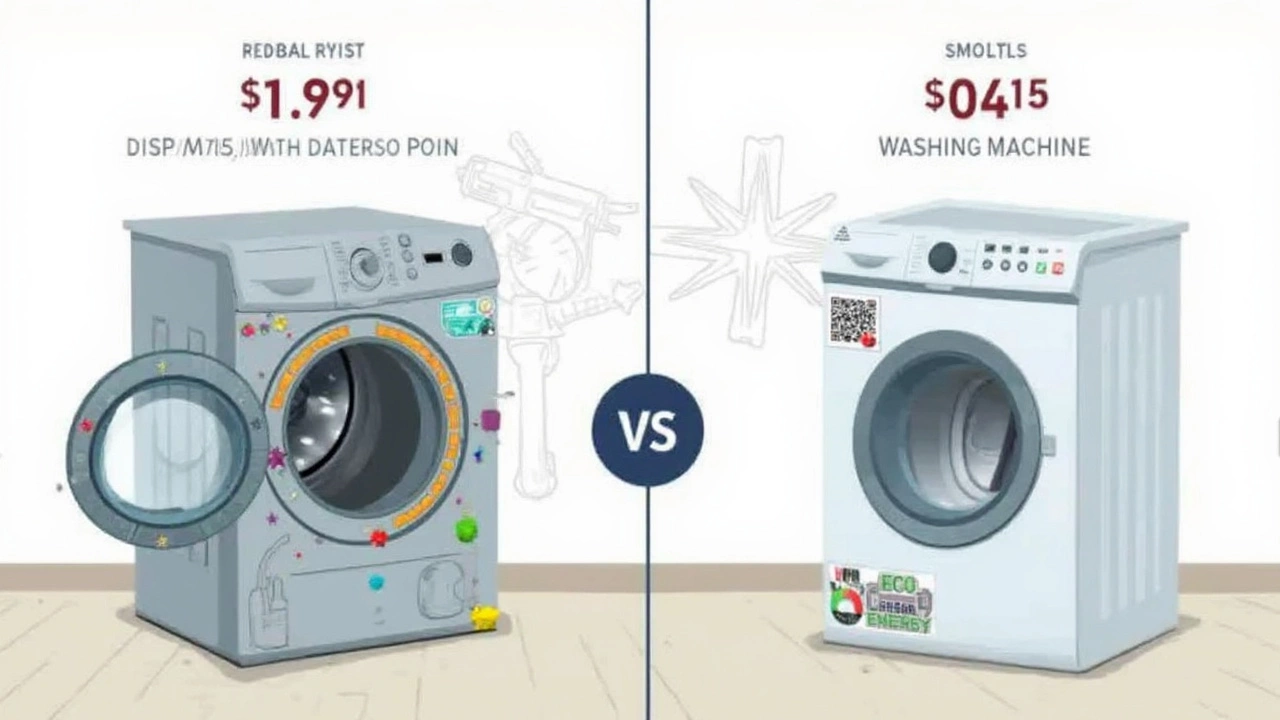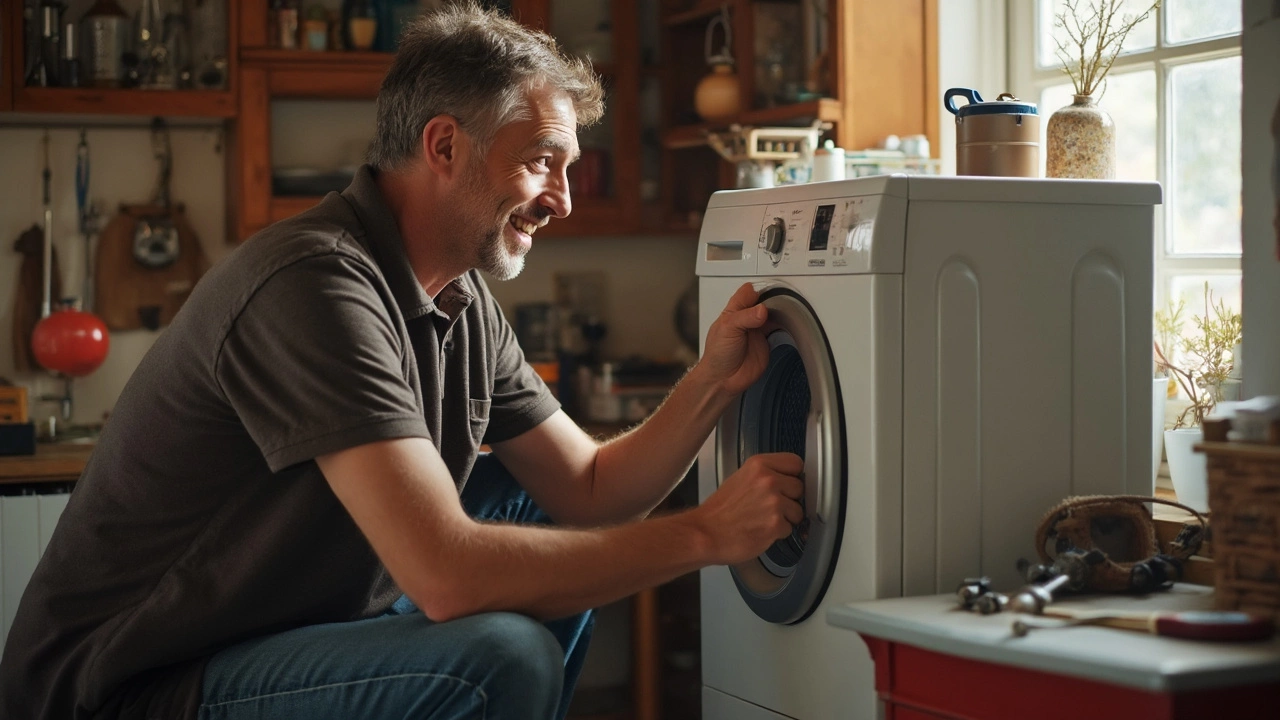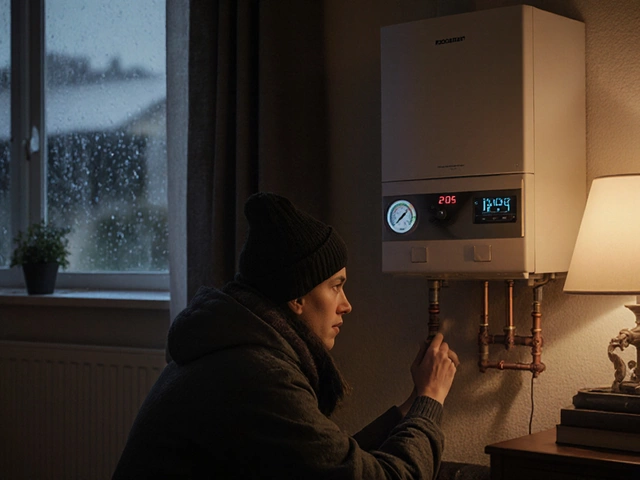Your washing machine just started making a weird thumping noise or maybe it’s refusing to spin at all. What do you do—call in a repair tech, or is it finally time to get a shiny new washer?
First thing—check if the problem is something minor you can fix yourself. Sometimes it’s as simple as unclogging the drain filter or balancing the load. Skip the panic if you haven’t done a quick reset or peeked at the hoses; so many "dead" washers turn out to have silly, easily solved issues.
But not every problem is a cheap fix. If water is leaking all over or the drum just won’t budge, you could be looking at bigger repairs. Knowing exactly what’s wrong is key. Try to narrow down the symptoms: Is it refusing to drain? Making a grinding sound? Each clue points toward something specific—and it helps you research the repair cost, or explain the issue if you call for help.
- Signs Your Washing Machine Needs Repair
- How Much Do Repairs Really Cost?
- When Is Replacement the Smarter Move?
- The Lifespan of Modern Washing Machines
- Tips to Make Your Washer Last Longer
- Advice From the Pros: Real-World Scenarios
Signs Your Washing Machine Needs Repair
Most people don’t pay much attention to their washing machine until it quits in the middle of laundry day. But small warning signs often pop up before a total breakdown. Catching these can help you avoid bigger and costlier trouble.
Here are some classic signs your washer might be headed for a repair:
- Strange noises or banging: A smack, thump, or grinding noise means something’s off—usually unbalanced loads, a worn-out drum bearing, or loose belts.
- Water leaks: If you’re seeing puddles or dampness under the machine, you could have a busted hose, a split door seal, or a cracked outer tub.
- Refusing to drain or spin: If your washer stops short, leaves lots of water, or spins half-heartedly, the culprit might be a clogged pump, broken lid switch, or fried control board.
- Odd smells: Musty or sour smells from the drum are classic signs of mold or mildew. Stinks that smell burnt could mean overheated wiring.
- Won’t start at all: If there’s power but nothing happens, the fuse, door latch, or main control board may have failed.
Don’t ignore these early symptoms—they’re not just quirks. A nationwide appliance repair survey found that about 40% of people ignored noises or drain issues for over a month before the machine broke down for good.
| Warning Sign | Possible Cause | Chance It Needs Repair |
|---|---|---|
| Loud banging | Drum bearings/balance issues | High |
| Leaks on floor | Hose/seal failure | Medium to High |
| Won’t drain | Pump clogged/broken | High |
| Unusual smells | Mold or electrical problem | Medium |
| Does not power on | Control/fuse issues | Medium to High |
The bottom line: if your washing machine repair involves one of the issues above, don’t shrug it off. Fast action not only saves money, but it can also stop a minor headache from turning into a major flood or total machine failure.
How Much Do Repairs Really Cost?
Repairing a washing machine can cost anywhere from a couple of bucks to a small fortune, and most people just want a straight answer: how much will you actually pay? Prices depend on the issue, the age and brand of your machine, and even your zip code. Here’s a breakdown of what folks are usually looking at:
| Common Repair | Average Cost (USD) |
|---|---|
| Replacing a belt | $120 - $180 |
| Drain pump replacement | $200 - $400 |
| Door lock repair | $90 - $200 |
| Water inlet valve | $130 - $250 |
| Drum or tub replacement | $350 - $600 |
| Control board | $250 - $450 |
Labor is often the biggest chunk of the cost. Many repair shops charge a flat fee just to show up—think $80 to $150 before they even unscrew a panel. Add parts and extra complications, and the numbers can balloon quick.
Older or high-end models get pricey fast, especially if parts are rare. Some brands are just plain expensive to fix, since they use proprietary components that cost more or take longer to get. A cheap top-loader is usually more affordable to repair than a fancy front-loader with all the bells and whistles.
Here’s a tip: if the total bill for repairing your washer is more than 50% of the cost of a new one, you might want to ditch it and upgrade. Most repair pros go by this rule-of-thumb, because a big repair on an old machine often leads to more headaches down the road.
And don’t forget—the real cost isn’t just money. Every day you spend without a working washer is another trip to the laundromat, more quarters swallowed by the machines, and laundry piling up at home. Sometimes quick action beats hunting for the absolute cheapest fix for your washing machine repair needs.
When Is Replacement the Smarter Move?
No one wants to blow money on pointless repairs, especially when a new washing machine could be a better deal in the long run. There are a few real signs that it’s just time to say goodbye to your old washer.
- Washing machine repair costs more than half the price of a new machine. If a repair runs you $300 and a new, decent model is $500–$600, it’s usually smarter to replace.
- Your washer is over 10 years old. That’s about the average lifespan for most models according to the U.S. Department of Energy. After that, you’ll probably just keep sinking cash into repeat fixes.
- Multiple parts are dying. If the pump, bearings, and control board are all giving you problems, you’ve hit the tipping point. A brand new washer won’t rack up those headaches.
- It’s a top-loader built before 2010. These older units use more water and electricity—new models can save you $50 or more a year on your bill, according to Energy Star.
Here’s a quick look at typical lifespan and costs, so you can see if it’s really worth hanging onto your old machine:
| Washing Machine Type | Average Lifespan (years) | Common Replacement Cost ($) | Common Major Repair Cost ($) |
|---|---|---|---|
| Basic Top-Loader | 10-12 | 400–700 | 150–350 |
| Front-Loader | 8-10 | 600–1200 | 200–400 |
| High-Efficiency | 8-12 | 700–1300 | 250–500 |
Keep in mind: new washers usually come with a multi-year warranty, and you can pick ones that use way less water and power. It’s not just about the upfront price—it’s about saving time, hassle, and future repair bills.

The Lifespan of Modern Washing Machines
Most people expect their washer to keep going for years, but let’s get real: today’s models don’t last forever. On average, a modern washing machine will run anywhere from 8 to 12 years if you’re using it normally and giving it some basic care. Older washers from the '90s could sometimes hit 20 years, but that’s rare now with newer tech and lighter parts.
If you’re curious about how your machine stacks up—or when you might start budgeting for a new one—here’s a breakdown from some real numbers. Back in 2023, the Association of Home Appliance Manufacturers lined up a bunch of brands and came up with these averages for washers:
| Washer Type | Average Lifespan (years) |
|---|---|
| Top-loading (basic, no fancy settings) | 11 |
| Front-loading (with digital controls) | 8-10 |
| High-efficiency, smart washers | 7-9 |
What makes a washer last longer or wear out early? Heavy use matters—a big family doing daily loads will see more wear than a single person running one load a week. Stuff like laundry detergent build-up, skipping routine cleaning, and overloading the drum will cut that lifespan short. Floods or power surges? Instant death for most electronics inside.
Most important: after about 8 years, expensive repairs like a broken motor, faulty circuit board, or serious drum issues usually mean the washer is at the end of its road. That’s right when repair bills start getting close to the cost of a new machine.
- Keep your machine level—an unbalanced washer wears out the motor and bearings faster.
- Run cleaning cycles with vinegar or specialty tablets a couple times a year.
- Check hoses for leaks or bulges every few months—replacing them before they fail saves you a flood.
- Don’t ignore odd noises or unbalanced shaking—it just gets worse and shortens the washer’s life.
So, if you’ve got a washer approaching the 8-year mark and the repairs keep coming, it makes sense to start thinking about a replacement. On the flip side, a washing machine repair for a unit that’s still pretty new (under 5 years old) is usually worth it, especially for simple fixes.
Tips to Make Your Washer Last Longer
Most people don’t realize how easily a washing machine’s life can be cut short by simple little mistakes. These machines aren’t exactly cheap to replace, so making yours last is a big money-saver. Here’s how you keep it running smooth for years.
- Washing machine repair pros recommend cleaning the lint filter and drain pump filter at least every few months. Built-up gunk can seriously clog up your washer and cause leaks or even burnout.
- Leave the washer door cracked open when you’re done. This tiny habit fights mold and keeps your washer from smelling funky. You’ll be shocked how much longer rubber seals and gaskets last.
- Always double-check for coins, hair pins, or anything weird in your clothes before tossing them in. Even small objects can wreck a pump or jam up a drum, leading to expensive repairs.
- Stick to the right amount of laundry detergent. Using too much can build up inside hoses and parts. High-efficiency washers need less soap, so always go by the measuring lines.
- Don’t walk away if your washer is wobbling or ‘walking’ across the floor. Run an empty spin cycle with no clothes to check if it’s level, and adjust the feet until it sits steady.
Here’s a table showing how often the little things can make a difference:
| Task | Recommended Frequency | Effect on Washer Life |
|---|---|---|
| Clean drain filter | Every 3 months | Reduces leaks, prevents motor burnout |
| Leave door open after use | Every time | Keeps mold away, protects seals |
| Check clothes for debris | Every load | Avoids jams and pump damage |
| Use proper detergent amount | Every load | Prevents buildup, keeps hoses clear |
| Level the machine | Whenever unit moves or vibrates hard | Prevents shocks, extends motor + drum life |
If you do these simple things, you might squeeze a couple extra years out of your machine—and avoid those annoying, random breakdowns. Not bad for habits that take just a few minutes.
Advice From the Pros: Real-World Scenarios
Techs see the same washing machine problems over and over, and most will tell you—half the calls could have been avoided with a bit of troubleshooting. But when it comes to bigger repairs, their experiences go a long way. Here’s what repair pros say about the most common situations and their take on whether it’s worth a fix or time to let go.
First up, here’s a quick table from an appliance repair network in the U.S. showing the average cost of the most common washing machine repair types as of 2024:
| Repair Type | Average Cost (USD) | Typical Outcome |
|---|---|---|
| Replace drainage pump | $150 - $350 | Usually worth it if washer under 8 years old |
| Drum bearing repair | $300 - $500 | Rarely worth it—labor and parts cost a lot |
| Door latch replacement | $100 - $180 | Easy fix—almost always worth it |
| Control board replacement | $250 - $400 | Depends on age & model; borderline decision |
One technician shared he’ll usually suggest skipping repairs if the total bill (parts, labor, home visit) is more than half the price of a new machine. For example, if a $400 fix gets you a slightly wobbly washer back, but a good mid-range new one sells for $600 to $700, putting cash into an old one rarely adds up.
Some real-world advice from the field:
- Leaky pumps: Fix it if the washer is fairly young and well-maintained (under 8 years). Brands like LG and Whirlpool often run well past a first pump replacement.
- Spin not working: Check for jammed coins or socks first. If it’s the motor or board, weigh the cost carefully. Big repairs on older machines are a gamble.
- Loud banging noises: Bearings gone bad pretty much spell the end unless you’re really attached—this job is pricey due to the time it takes.
Some pros even told me that brand matters. Machines from companies that still sell most parts (like Whirlpool and Electrolux) usually make sense to repair. Older, off-brand, or obscure models? Sometimes parts are impossible to find, and a replacement is the only way forward.
A final tip: always get a clear estimate. Ask if there are call-out or diagnostic fees, and don’t be shy about getting a second opinion. A good tech will lay out your options and tell you honestly if you’re about to throw money at a lost cause.




